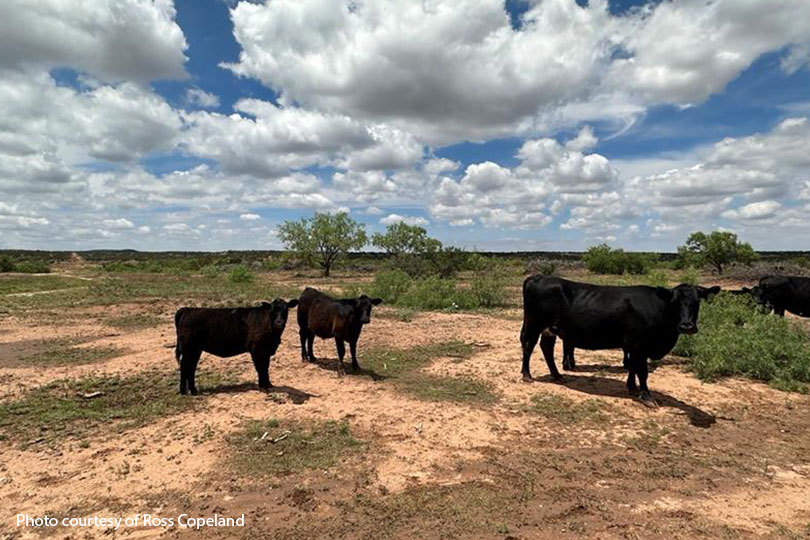By Emmy Powell
Communications Specialist
Rain fell across the state over the last 10 days, but some parts of Texas are still dry.
Coke-Sterling County Farm Bureau President Ross Copeland said conditions are worse than last year.
Most rain in the West Texas region has been just to the north and east of them, he said.
Copeland raises cattle and hair sheep and grows wheat for grazing. He noted he doesn’t have enough water for irrigation.
“We typically ship our calves in June or in a really wet year, we’ll hold it off till July, or ween them and hang on to them till August or September,” Copeland said. “But this year, we’re definitely going to be selling in May due to the drought and lack of grass.”
Copeland’s stock tanks still have water, but they will run dry soon if drought conditions continue for the area.
“This past year has been extremely tough. We are currently blessed with a good cattle market,” he said. “We’re hoping that holds out, but expenses have been high the previous year due to inflation and all the other things in addition to the lack of rainfall. It’s been tough ranching.”
Without measurable rainfall, he’s left with few options.
“We held our calves until the end of June last year before we shipped because we could. We can’t do that this year,” he said. “There’s less grass, and we didn’t have near as much wheat to provide grazing in the winter months. So, it’s worse off compared to last year.”
Recent storms brought rain to Copeland’s operation, but he continues to hope for more.
Current drought conditions
A year ago, 9% of the state was drought free, and the most recent drought monitor map shows 33% is drought free, with 37% experiencing severe to exceptional drought.
After seeing La Niña weather patterns, experts say weather patterns have shifted toward an El Niño pattern.
El Niño weather patterns tend to deliver above-average precipitation to Texas during the cooler parts of the year.
AgriLife Extension agronomists say the High Plains and Panhandle continue to wait on improved conditions.

